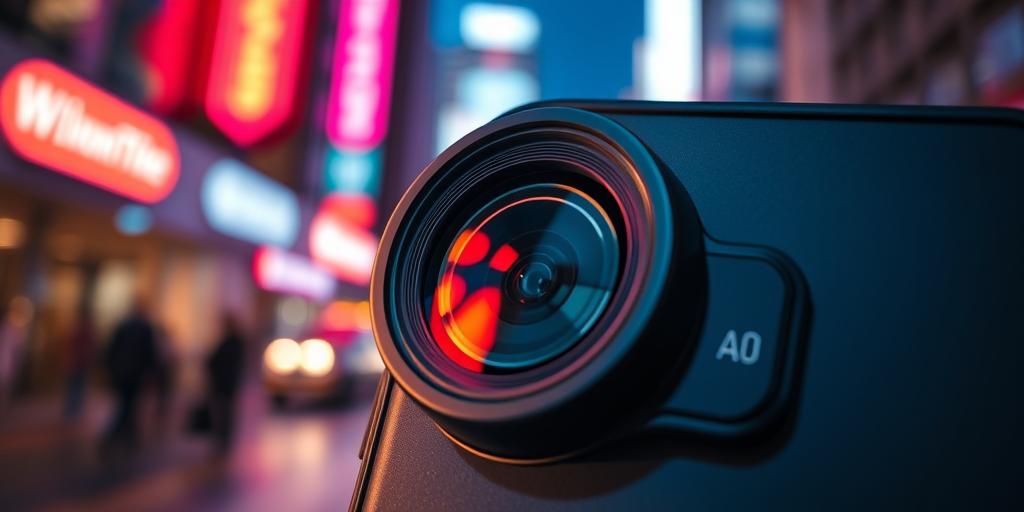Have you ever felt like smartphone camera technology is moving too fast? One moment, you’re happily snapping photos with your current phone, and the next, you feel the overwhelming pressure to upgrade because the latest model boasts an extra megapixel or a slightly better low-light performance. The smartphone camera race is relentless, and it’s not always clear whether these improvements are truly meaningful or just clever marketing. Let’s dive into the fascinating world of smartphone cameras, exploring whether the current pace of innovation is sustainable and beneficial for the average consumer.
Megapixel Mania: More is Better, Right?
The pursuit of higher megapixel counts has become a central theme in the smartphone camera race. Marketing materials often emphasize this number as a key indicator of image quality. However, megapixels alone don’t tell the whole story. While more megapixels can translate to larger, more detailed images, the sensor size, lens quality, and image processing capabilities play a significantly larger role in determining the final image quality. The term “megapixel” is frequently used as a catchy marketing phrase to attract attention but does not represent the whole picture.
Sensor Size Matters
The size of the image sensor is crucial. Larger sensors gather more light, resulting in better low-light performance and a shallower depth of field, enabling more professional-looking photos with blurred backgrounds (bokeh). Many manufacturers prioritize megapixel counts, sometimes at the expense of sensor size. It’s a trade-off: more megapixels may offer increased detail but potentially at the cost of image quality in low-light conditions.
Beyond Megapixels: Image Processing
Modern smartphones use sophisticated algorithms to enhance images. These algorithms perform tasks like noise reduction, sharpening, and dynamic range adjustment. The quality of the algorithms determines how well the camera handles various shooting conditions, especially in challenging environments. The software capabilities of a smartphone, such as AI-assisted scene detection and HDR, are a significant factor in creating a striking photograph.
The Computational Photography Revolution
The advancements in computational photography are remarkable. Features like night mode, AI scene detection, and portrait mode rely heavily on software processing to create stunning images that previously required professional-grade cameras. However, there’s a potential drawback. Over-processing can sometimes result in unnatural-looking images, sacrificing realism for enhanced visuals. Smartphone cameras must strike a balance between processing and producing natural imagery.
Night Mode Magic
Night mode has revolutionized smartphone photography, enabling remarkably clear and bright images in low-light environments. This capability is particularly relevant for capturing nighttime cityscapes, or stunning landscapes at night. While this function is a considerable advancement, some still believe that images created with night mode, due to their post-processing, lack authenticity.
AI-Powered Scene Recognition
AI-powered scene recognition is another significant trend. Smartphones automatically adjust settings based on the detected scene, such as landscape, portrait, or food. While this is incredibly convenient, it sometimes leads to over-processing and a lack of user control, a concern for seasoned photographers. The constant innovation may sometimes lead to limitations on the user’s abilities to edit their work.
The Environmental Impact: Is it Worth the Upgrade?
The constant drive for upgrades contributes to electronic waste, and the manufacturing process of these devices is energy-intensive. Considering the environmental impact is crucial when deciding whether to upgrade your smartphone based on minor camera improvements. This consideration is important; one must consider the cost, both in terms of money and environmental impact, of upgrading to the next model just for a marginally improved camera.
Sustainable Practices
Consumers should consider the long-term use of their smartphones, to reduce the ever-increasing amount of electronic waste created through consumerism. The idea of using a smartphone until it no longer functions is a positive step towards a healthier environment.
The Cost of Upgrades
The financial cost of consistently upgrading smartphones to keep up with the latest camera technology is significant. Many consumers find the cost of upgrading phones to be unreasonable given the incremental improvements in camera technology between each release of a new phone. It is important to assess the benefits and improvements carefully before making a decision to upgrade.
The Verdict: Is the Race Sustainable?
The smartphone camera race is undeniably impressive, offering increasingly sophisticated features and capabilities to consumers. However, it’s essential to weigh the benefits against the environmental costs and the potential for over-saturation. Focusing on quality improvements rather than merely incremental upgrades, as well as longer-lasting devices, is key to a more sustainable future. Are the improvements worth the financial and environmental costs? That’s a question each consumer must answer for themselves. Ultimately, the race isn’t necessarily about winning but about finding a balance between innovation and responsibility.
Want to learn more about making informed decisions about upgrading your smartphone? Check out our resources on sustainable tech and responsible consumption!




